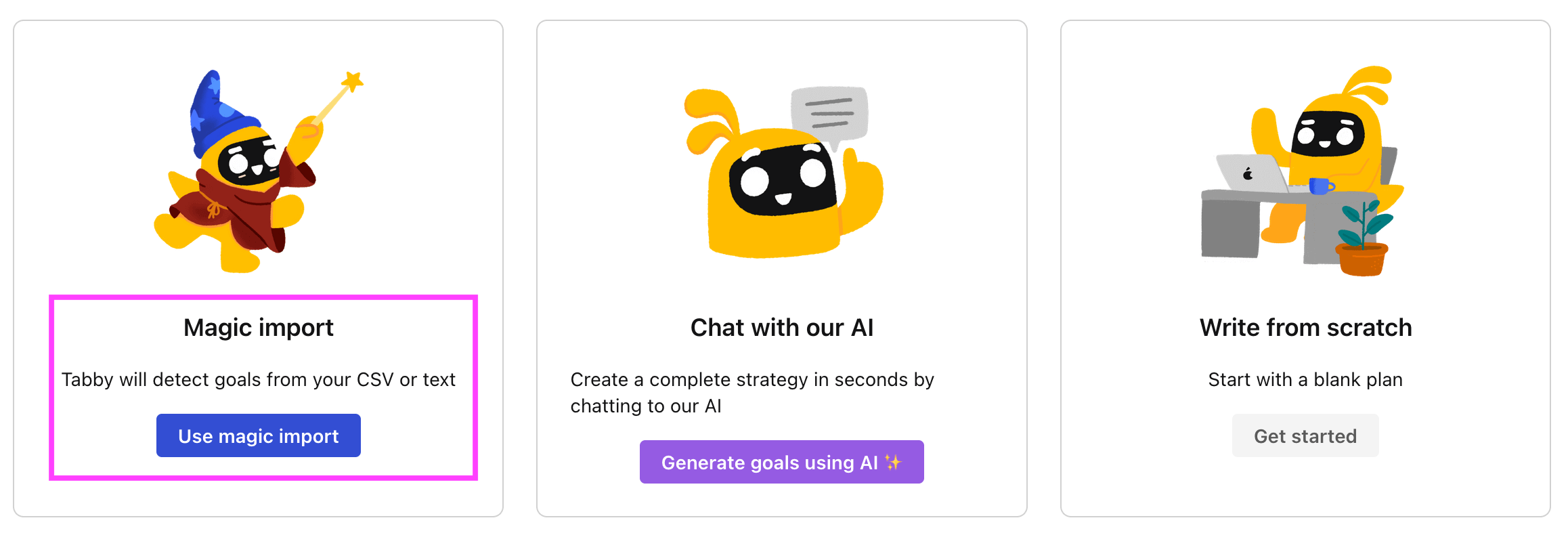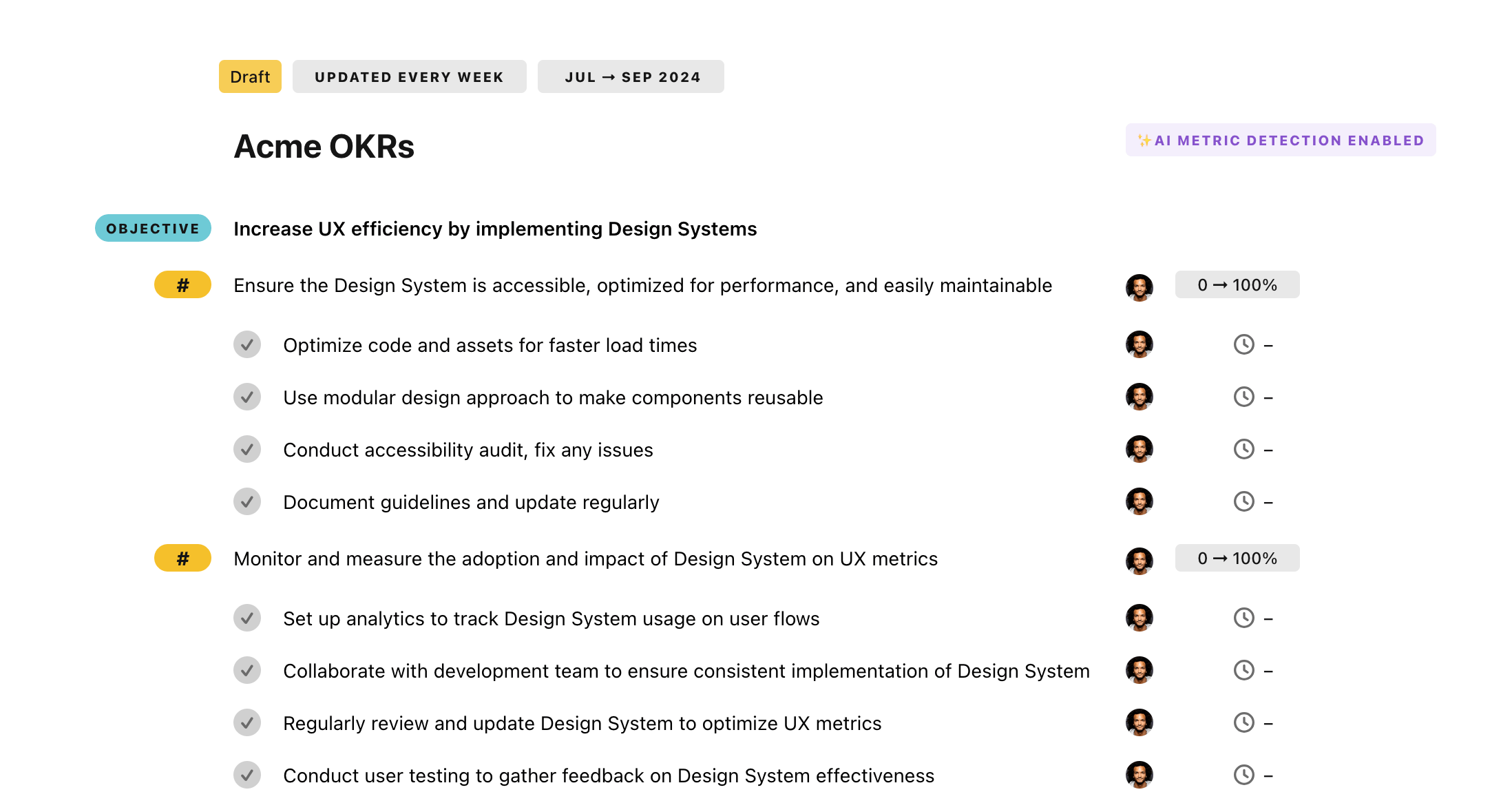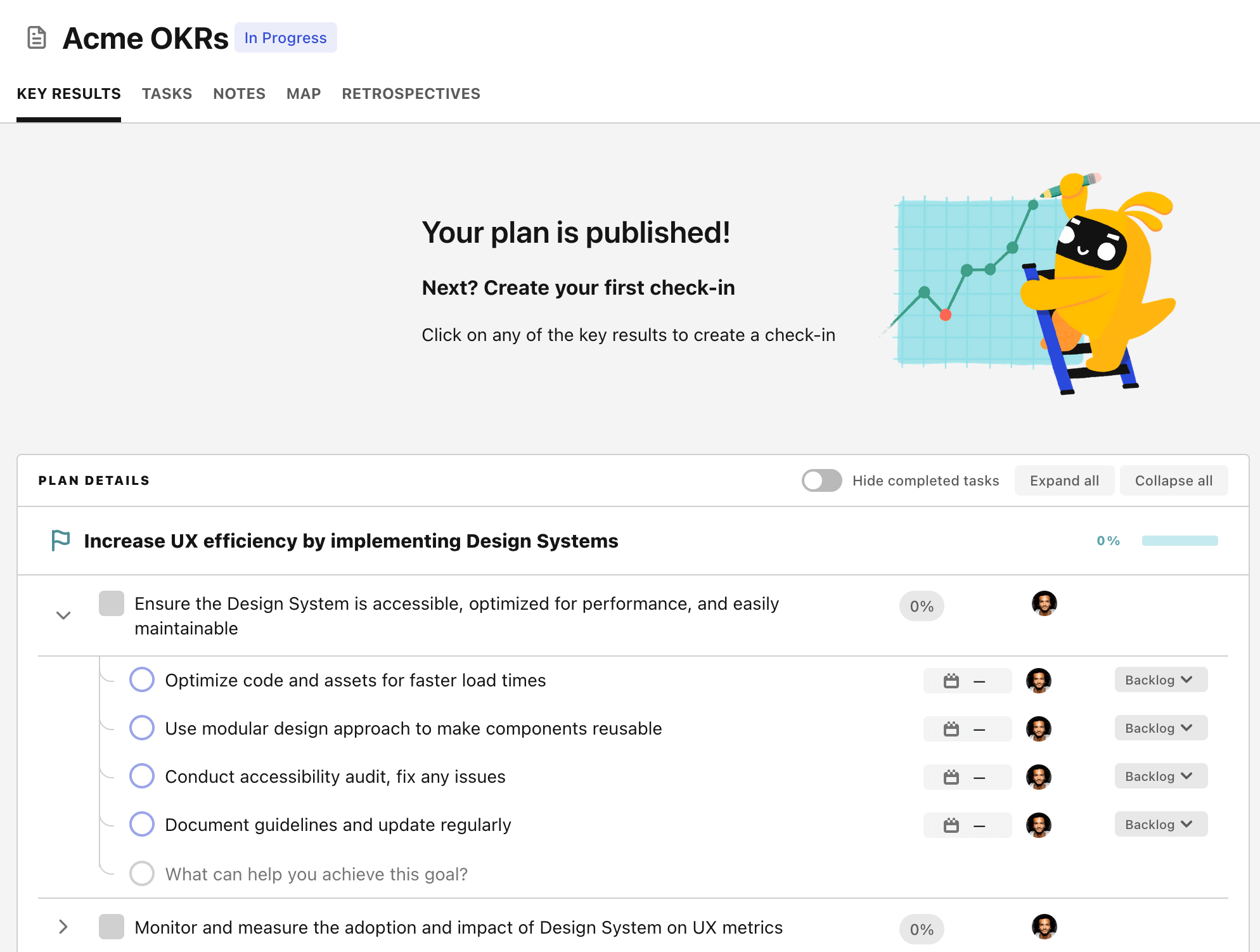OKR template to consolidate all visitor forms into a single accessible location
Your OKR template
Another objective under this OKR is to identify and compile all existing separate visitor forms, with a target of increasing the compilation rate by 15% weekly. The process includes locating all forms, increasing their assembly rate gradually, and compiling them systematically.
The final objective is centered on developing a seamless, centralized interface for all forms with zero errors. This task will comprise constructing a centralized interface that integrates all form types. Additionally, it will involve conducting thorough UI/UX research to ensure visitor-friendly interface design and implementing rigorous testing routines to eliminate any errors.
Achieving these objectives will streamline the visitor form completion process, making it more convenient for visitors to interact with the forms, hence, leading to not only an increase in form completion rate but an overall improvement in visitor engagement and satisfaction.
ObjectiveConsolidate all visitor forms into a single accessible location
KRAchieve a 50% increase in visitor form completion after unification
Implement user-friendly forms with simple, concise instructions
Develop targeted marketing campaigns motivating form completion
Analyze existing form data to identify barriers to completion
KRIdentify and compile all existing separate visitor forms by 15% each week
Locate all existing separate visitor forms
Increase compilation rate by 15% weekly
Compile located visitor forms systematically
KRDevelop a user-friendly, centralized interface for all forms with 0 errors
Construct centralized interface integrating all forms
Conduct thorough UI/UX research for user-friendly interface design
Implement rigorous testing routines to ensure zero errors
How to edit and track OKRs with Tability
You'll probably want to edit the examples in this post, and Tability is the perfect tool for it.
Tability is an AI-powered platform that helps teams set better goals, monitor execution, and get help to achieve their objectives faster.
With Tability you can:
- Use AI to draft a complete set of OKRs in seconds
- Connect your OKRs and team goals to your project
- Automate reporting with integrations and built-in dashboard
Instead of having to copy the content of the OKR examples in a doc or spreadsheet, you can use Tability’s magic importer to start using any of the examples in this page.
The import process can be done in seconds, allowing you to edit OKRs directly in a platform that knows how to manage and track goals.
Step 1. Sign up for a free Tability account
Go tohttps://tability.app/signup and create your account (it's free!)
Step 2. Create a plan
Follow the steps after your onboarding to create your first plan, you should get to a page that looks like the picture below.

Step 3. Use the magic importer
Click on Use magic import to open up the Magic Import modal.
Now, go back to the OKR examples, and click on Copy on the example that you’d like to use.

Paste the content in the text import section. Don’t worry about the formatting, Tability’s AI will be able to parse it!

Now, just click on Import from text and let the magic happen.

Once your example is in the plan editor, you will be able to:
- Edit the objectives, key results, and tasks
- Click on the target 0 → 100% to set better target
- Use the tips and the AI to refine your goals
Step 4. Publish your plan
Once you’re done editing, you can publish your plan to switch to the goal-tracking mode.

From there you will have access to all the features that will help you and your team save hours with OKR reporting.
- 10+ built-in dashboards to visualise progress on your goals
- Weekly reminders, data connectors, and smart notifications
- 9 views to map OKRs to strategic projects
- Strategy map to align teams at scale